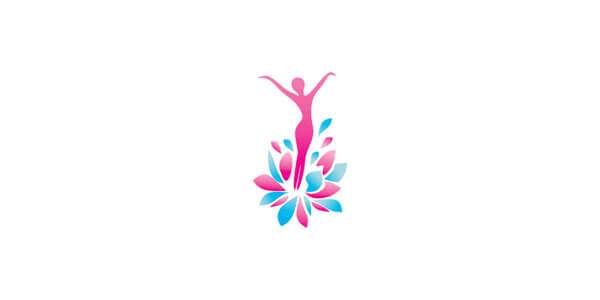The gastric balloon pill is a medical weight loss option that does not require surgery. Your doctor will use up to three gas-filled balloons, inserted in pill form through your mouth, to take up space in your stomach and leave less room for food. This helps patients eat less because they feel full sooner while eating.
This procedure is best for patients who want to lose a moderate amount of weight. Ideal candidates are between 30 and 100 pounds overweight.
TABLE OF CONTENTS
Click on any of the topics below to jump directly to that section
- How It Works
- Weight Loss
- Health Benefits
- How to Qualify
- Cost and Insurance
- Recovery
- Diet and Life After
- Balloon Removal
- Office Visits After Gastric Balloon Pill Removal
- Downsides
- Gastric Balloon Pill Vs. Standard Gastric Balloons
- Start To Finish
- Find a Gastric Balloon Doctor

SECTION SUMMARY:
- The gastric balloon pill is swallowed
- When the pill reaches the stomach, the gastric balloon inside expands
- The gastric balloon leaves less room for food, so you eat less
- Up to three balloons used over the course of treatment
The gastric balloon pill is attached to a long, thin tube which is connected to a gas compressor. After the balloon capsule is swallowed, x-rays are taken to confirm the balloon is in the stomach. Your doctor will then inflate the balloon and remove the tube.
The inflated balloons rest at the top of the stomach. The balloons make the stomach “crowded,” which makes patients feel full sooner while eating.
Up to three balloons will be placed gradually in your stomach over a 3 month period:
- Balloon 1 – first visit
- Balloon 2 – 1 month after 1st visit
- Balloon 3 (if necessary) – 3 months after 1st visit
Each new balloon will cause the patient to feel more and more full while eating. As a result, you will eat less with each balloon and continue to lose weight at an increasing rate.
SECTION SUMMARY:
- You can lose up to one-third of your excess weight in 6 months
The average weight loss with the Obalon gastric balloon pill is one third of the patient’s excess body weight (1). This means that someone who is 100 pounds overweight can expect to lose about 30 pounds in six months when the balloons must be removed.
Long-term weight loss (after the balloon is removed) will depend on diet and lifestyle. To reach optimal weight, patients need to follow the advice of their doctors. Creating meal plans and an exercise routine before the procedure contributes to greater weight loss.
The gastric balloon pill is sometimes used for weight loss before surgeries like gastric sleeve or gastric bypass. These surgeries have better outcomes if patients lose weight beforehand.
Speak with your surgeon if you have additional questions about combining procedures.
SECTION SUMMARY:
- Your obesity related health conditions may improve
- Common conditions include diabetes, asthma, and cardiac health
The gastric balloon pill is relatively new and there are few studies on its health benefits. So far, findings have identified improvements for the following:
- Blood pressure
- Blood sugar
- Cholesterol
- Triglycerides (2)
Other common benefits of weight loss are likely, but not yet proven. Benefits of weight loss include:
- Improvement or resolution of sleep apnea
- Improved energy
- Better sleep
- Improved quality of life
- Higher self esteem
Weight loss also improves joint health. For every pound of weight lost, there is a 4 pound reduction in pressure on the knee (3). This improves mobility and reduces pain in the knees.
To learn more, see our page on page on Obesity Health Problems.
SECTION SUMMARY:
- Your BMI should be at least 30
- Use the BMI calculator to learn your BMI
Patients must be able to swallow a test capsule before placement of the gastric balloon. If the patient is unable to swallow the test capsule, they will not be eligible for this procedure.
Other qualification requirements include:
- Age 22 years or older
- History of failed attempts to lose weight by diet and exercise
- Willing to commit to a year long program that includes follow up care after the balloons are removed
Disqualifiers for the procedure include:
- Eating disorders (anorexia, bulimia, binge eating disorder)
- If the patient expects to live at an elevation greater than 4000 ft. from balloon placement, or lower than 2500 ft.
- Regular use of the following medications (these medications also cannot be taken after the balloon is placed):
- Aspirin
- Motrin
- Advil
- Blood thinners
- Patients who have previously had bariatric surgery
- Women who are pregnant or nursing
- History of irritable bowel syndrome, radiation enteritis, or other inflammatory bowel disease, such as Crohn’s disease
- Active alcohol use disorders (alcoholism) or drug addiction

SECTION SUMMARY:
- The gastric balloon pill is not covered by insurance
- Will cost you between $8,000 and $10,000 dollars
The gastric balloon pill typically costs between $8,000 and $10,000 and include the following services:
- Initial consultation
- Diet and lifestyle planning with a physician recommended nutritionist
- Placement of 3 balloons
- Follow up visits
- Balloon removal
- 6 months of follow up care after the balloon is removed
Many doctors have payment plans available. Speak with your local provider for financing options.
SECTION SUMMARY:
- You can return home the same day (outpatient)
- Most patients return to work within 1-3 days
The majority of patients can return to normal daily living the day of the procedure. There are no exercise restrictions, and return to work the following day is standard.
The fast recovery is due in large part to its non-surgical approach. Unlike bariatric surgery, there are no medications or scars that slow the recovery process.

SECTION SUMMARY:
- You will focus on improving your diet
- Exercise will improve your health and increase your weight loss
Day 1: Clear Liquids
Patients are only allowed to drink clear liquids for the first 24 hours. This diet allows your stomach to adjust to the balloons without stressing the organ. This includes:
- Water
- Broth
- Zero calorie sports drinks (Gatorade, Powerade)
Other points to keep in mind on the 1st day:
- Drink warm fluids instead of cold
- Carbonated drinks are not permitted
- Limit any caffeine intake and be sure to drink at least 8 cups of water a day
Day 2: Soft Food Diet
Patients must follow a soft food diet on the second day. Foods allowed during this phase include:
- All liquids
- Pureed fruits
- Rice
- Potatoes
- Cottage cheese and yogurt
- Oatmeal
- Eggs
Foods to avoid:
- Uncooked vegetables
- Cereals
- Heavy meats (steak, pork)
- Bread
- Corn
- Crisp fruits (apples, pineapple)
Day 3 – Begin your new gastric balloon diet
Gastric balloon pill patients can begin a normal diet with solid foods on the third day. The best diet is one that is pre-planned and agreed upon with your nutritionist. You should be less hungry with the balloons in, but managing portions remains an important part of weight loss success.
Buying foods from the grocery store instead of eating out can help you save money and maintain discipline. Avoid fast food and prep your meals for the week, and avoid processed foods when possible.
Some patients report having an intolerance for foods they were previously able to eat. This usually includes spicy foods with an acidic profile such as peppers or hot sauce. Spicy foods are not recommended for patients with the balloon.
See our Bariatric Recipes for Dinner for healthy meal ideas.
Exercise
Exercise is an important part of any weight loss program. Your doctor should work with you on developing a routine that fits your needs.
Patients who exercise benefit in the following ways:
- Improved mood
- Reduced risk of cardiovascular disease
- Increased weight loss
- Stronger muscle and bones
- Increased energy
- Increased risk of disease like diabetes and cancer
Regular exercise over the long term will not only help with your weight loss, but it will improve your quality of life. Finding the right program that you can stick with is important for long term health, weight maintenance, and happiness. The gastric balloon pill should act as a kickstart for getting your body active.
For more information, see our Exercise for Weight Loss Surgery Patients page.
7 Tips for Success:
- Start attending a weight loss surgery support group. Support groups can lead to greater weight loss and give patients a safe space to talk about their progress and setbacks.
- Maintain healthy sleep patterns. Lack of sleep makes weight loss more difficult, so do your best to maintain a healthy sleep schedule.
- Significant weight loss can lead to changes in your relationships. Speak with your partner about your weight loss goals and how life will change when you achieve them. Preparing for this can help with any unexpected challenges.
- Use a free diet journal to track your food intake. Patients who use a diet journal lose more weight and make better decisions.
- Cut back on sugary drinks. Beverages, including some healthy juices, are often “calorie dense” and carry a high sugar content. Eliminating these drinks can aid in weight loss. Water is always a good choice.
- Exercise in the morning. Not everyone can make this lifestyle adjustment, but it’s helpful for those who can. Morning exercise aids in nighttime sleep and sets your metabolic rate for the day.
- Take a multivitamin. This will address any nutritional deficiencies that may stem from dietary changes.
SECTION SUMMARY:
- Your balloons will be removed after 6 months
Doctors will remove all three balloons after six months. During the final procedure, the doctor will use an endoscope inserted through the mouth and down the throat to deflate the balloons. After the balloons are deflated, the doctor will remove them from the stomach.
Doctors will sedate the patient for the removal. Although anesthesia is not required, patients are required to have a ride home.

SECTION SUMMARY:
- The cost of the balloons includes visits with your doctor AFTER the balloons are removed
- Continue working with your doctor to improve your outcome
Patients are expected to continue working with their doctor for an additional 6 months, which is included in the cost of your gastric balloon. Follow-up services include:
- Weight loss assessments
- Lifestyle management
- Dietary recommendations
For the convenience of patients, some doctors work with a “remote wellness provider.” This technology-based service gives patients access to their medical providers via email or texting. It is a great way for patients with busy schedules to continue receiving care after the balloon is removed.
SECTION SUMMARY:
- Most people experience mild symptoms of bloating and cramps
- Symptoms usually go away within 1-2 weeks
The stomach will need to adjust to the presence of the balloons. This can result in various side effects that usually resolve within 1-2 weeks. Patients who report side effects may benefit from a brief period of inactivity after the procedure.
The Obalon gastric balloon pill trial study took place from March-May 2016. During this trial, side effects for 196 patients were documented. The majority of patients with side effects (82.3%) were reported as mild and resolved within 14 days.
The following table shows the most common side effects:
| Side Effects | % of Patients |
|---|---|
| Abdominal Pain (Cramping, Discomfort) | 72.6% |
| Nausea | 56% |
| Vomiting | 17.3% |
| Indigestion Heartburn | 16.7% |
| Bloating | 14.6% (4) |
When serious adverse events occur, doctors remove the balloons and begin treating the new condition. These events are rare (>1%) and include the following conditions:
- Gastroenteritis
- Peptic ulcer
- Severe gastric irritation
- Bowel obstruction
Patients should reach out to their doctor if loss of fullness or increased hunger occurs. This may be a sign of a rare balloon deflation. Nausea, vomiting, or pain after the initial balloon symptoms subside may indicate a deflated balloon.
Of the 981 balloons placed during the trials, there was one incidence of balloon deflation. No health issues occurred as a result of the deflation and the balloon was endoscopically removed (removed through the mouth).

SECTION SUMMARY:
- Both types of balloon result in similar weight loss
- Differences include materials and how the balloons are placed
| Similarities: Obalon Gastric Balloon Pill vs Orbera/Reshape Gastric Balloons: |
|
| Differences: Obalon Gastric Balloon Pill vs Orbera/Reshape Gastric Balloons: |
|
SECTION SUMMARY:
- Important steps for long-term success
1. Meet with an Obalon gastric balloon pill provider
Patients usually consult with the doctor once before the procedure. If there are health concerns, the doctor may schedule an additional visit to run testing.
2. 8 Hours Before
Patients should not consume any food or drink within 8 hours of the procedure.
3. Procedure Day
The entire gastric balloon pill procedure takes about ten minutes. It is normal to be apprehensive, but the procedure is painless and fast.
4. Recovery
Patients can return to their normal daily routines immediately. Returning to work the following the day is common.
5. Manage your diet
You will be on a liquid diet for one day and a soft food diet for another day. On day three, you can resume eating normal foods. Work with your providers nutritionist on a meal plan that you will follow for the next six months.
6. Two More Balloons
You will receive additional balloons around the one month and three month marks. You will be in contact with your doctor in between appointments for follow up.
7. Balloons Are Removed After 6 Months
Your balloons will be endoscopically removed (through the mouth) after six months. You will require mild sedation and, as a result, will need to coordinate a ride home.
8. Six More Months Of Outpatient
Continue working with your provider for six months after the balloons are removed. These services are covered in the cost of your gastric balloon.
9. Long-Term Weight Loss Maintenance
Long-term weight loss is dependant on diet and lifestyle. After the balloons are removed, patients must employ the lifestyle skills they’ve learned during this process.



